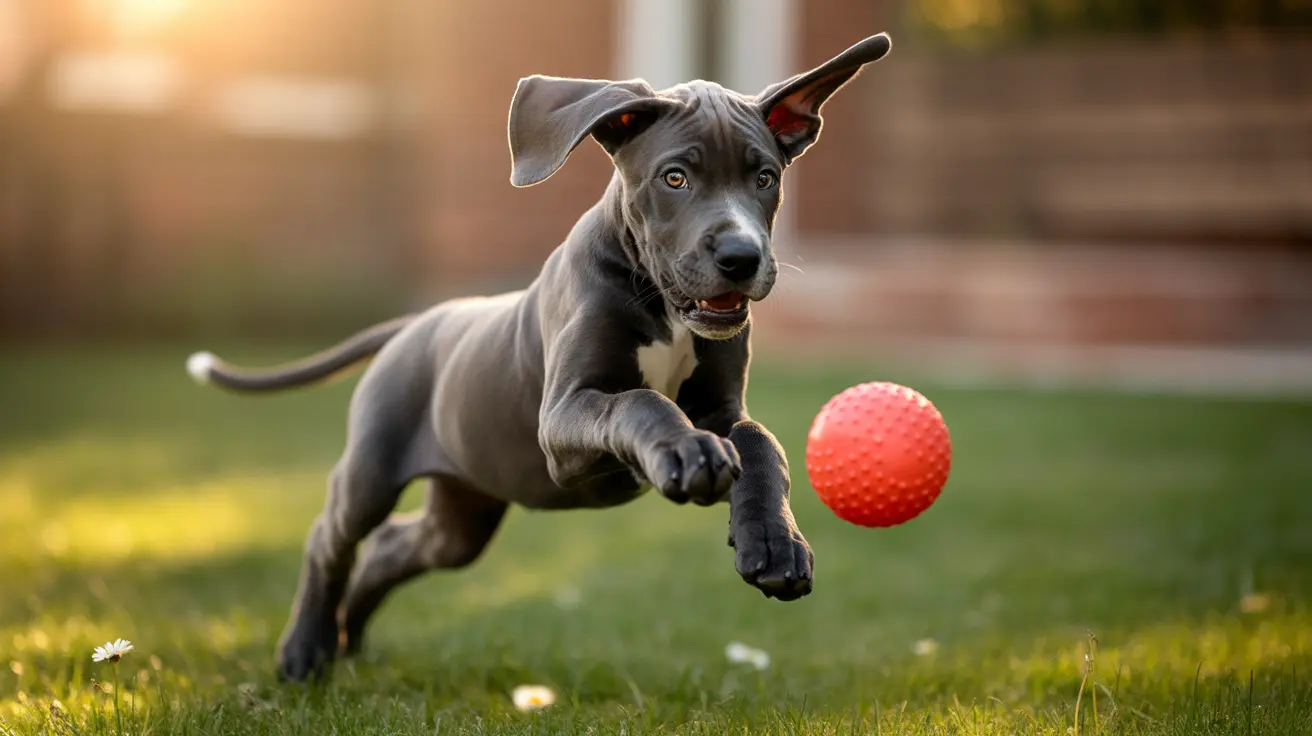Great Danes are magnificent dogs known for their imposing size and gentle disposition. However, many owners find themselves wondering about their pet's energy levels, especially during the early years. This comprehensive guide will help you understand your Great Dane's energy patterns and learn effective strategies for managing their activity levels throughout different life stages.
Whether you're a new Great Dane owner or considering bringing one into your family, understanding their unique energy requirements and behavioral development is crucial for ensuring a harmonious relationship with these gentle giants.
The Natural Energy Pattern of Great Danes
Despite their large size, Great Danes aren't naturally hyperactive dogs. Their energy levels follow a predictable pattern tied closely to their age and development stages. Adult Great Danes are typically known for their calm and steady temperament, earning them the nickname "gentle giants."
However, during their extended puppyhood and adolescence, which can last up to 2-3 years, these dogs often display significantly higher energy levels and more playful behavior.
Age-Related Energy Changes in Great Danes
The journey from an energetic puppy to a calm adult Great Dane follows several distinct phases:
Puppyhood (0-12 months)
During this period, Great Danes experience rapid growth and typically show the highest energy levels. They require careful exercise management to protect developing joints while allowing for healthy activity.
Adolescence (1-2 years)
Energy levels remain high, but dogs begin showing signs of maturity. This phase requires consistent training and appropriate exercise to channel their energy constructively.
Adult Phase (2-3 years and beyond)
Most Great Danes naturally calm down during this period, displaying their characteristic gentle and laid-back adult temperament.
Managing Your Great Dane's Exercise Needs
Proper exercise is crucial for maintaining healthy energy levels in Great Danes:
- Puppies need about 90 minutes of age-appropriate activity daily
- Adult dogs require approximately 60 minutes of exercise per day
- Activities should include structured walks, controlled play sessions, and mental stimulation
Factors That Influence Energy Levels
Several factors can affect your Great Dane's energy levels:
- Diet and nutrition
- Mental stimulation
- Daily routine consistency
- Environmental factors
- Health conditions
- Socialization experiences
Effective Strategies for Calming an Energetic Great Dane
To help manage your Great Dane's energy levels:
- Establish a consistent daily routine
- Provide appropriate mental stimulation through training and puzzle toys
- Create a calm environment with designated quiet spaces
- Use positive reinforcement training methods
- Ensure proper socialization with other dogs and people
Frequently Asked Questions
When do Great Danes usually calm down and stop being hyperactive?
Most Great Danes begin to calm down between 2-3 years of age, though individual dogs may vary. This coincides with their physical maturity and the end of adolescence.
How much daily exercise does a Great Dane need to manage their energy?
Puppies need about 90 minutes of daily exercise, while adult Great Danes require approximately 60 minutes. Exercise should be age-appropriate and include both physical activity and mental stimulation.
What causes a Great Dane to have high energy even after puppyhood?
Persistent high energy in adult Great Danes can be caused by insufficient exercise, lack of mental stimulation, irregular routines, or underlying health issues. Sometimes, anxiety or boredom can manifest as excessive energy.
How can I mentally stimulate my Great Dane to reduce hyperactivity?
Provide puzzle toys, training sessions, scent work, and interactive games. Regular socialization and new experiences also help keep their minds engaged and reduce hyperactive behavior.
Does spaying or neutering affect a Great Dane's energy level or behavior?
While spaying or neutering can help manage hormone-driven behaviors, it typically doesn't significantly impact overall energy levels unless hormones were the root cause of specific behaviors.
Conclusion
Understanding and managing your Great Dane's energy levels requires patience, consistency, and knowledge of their developmental stages. With proper exercise, training, and care, these magnificent dogs will naturally develop into the calm, gentle companions they're known to be. Remember that each dog is unique, and working with their individual personality while maintaining consistent routines will help achieve the best results.






